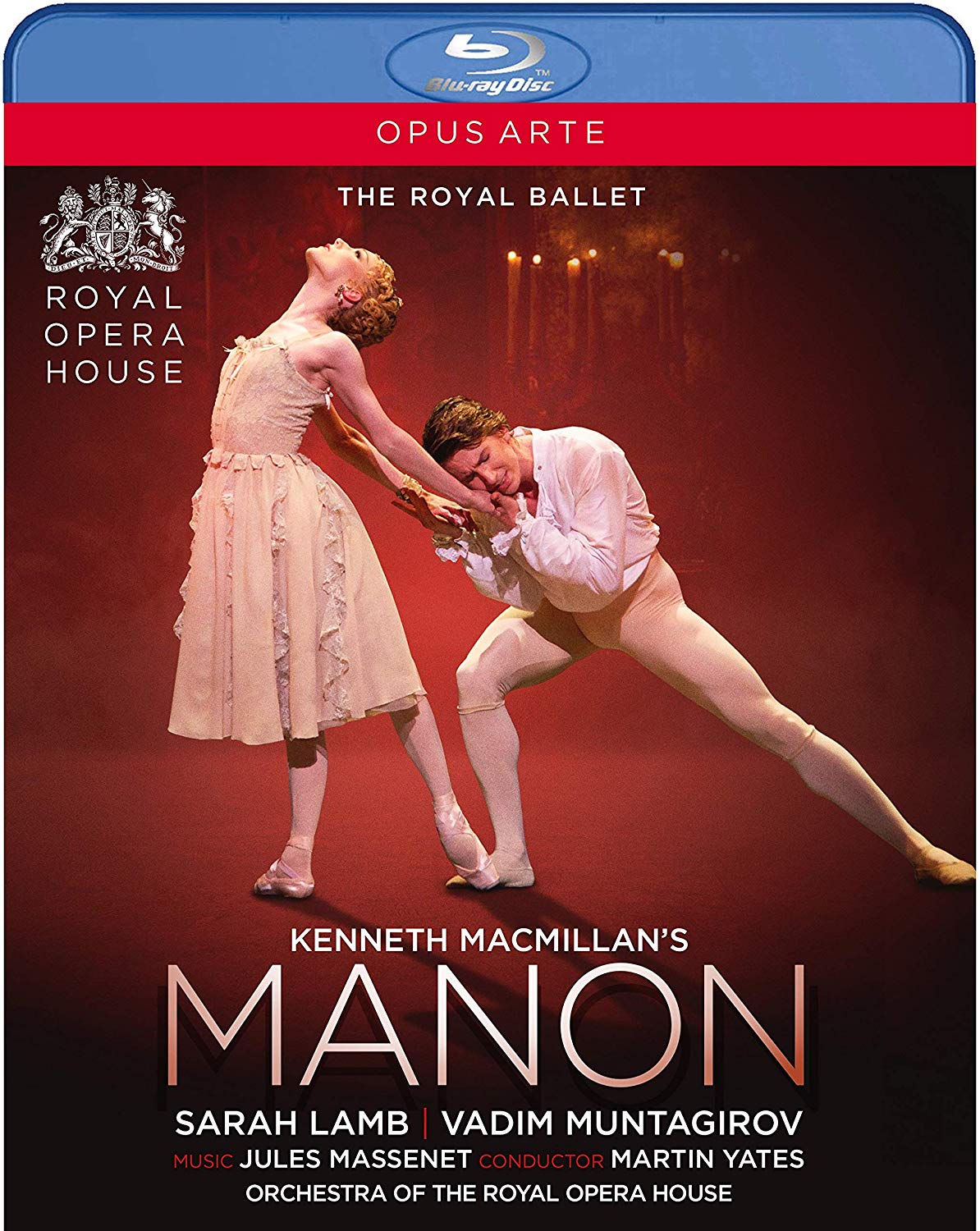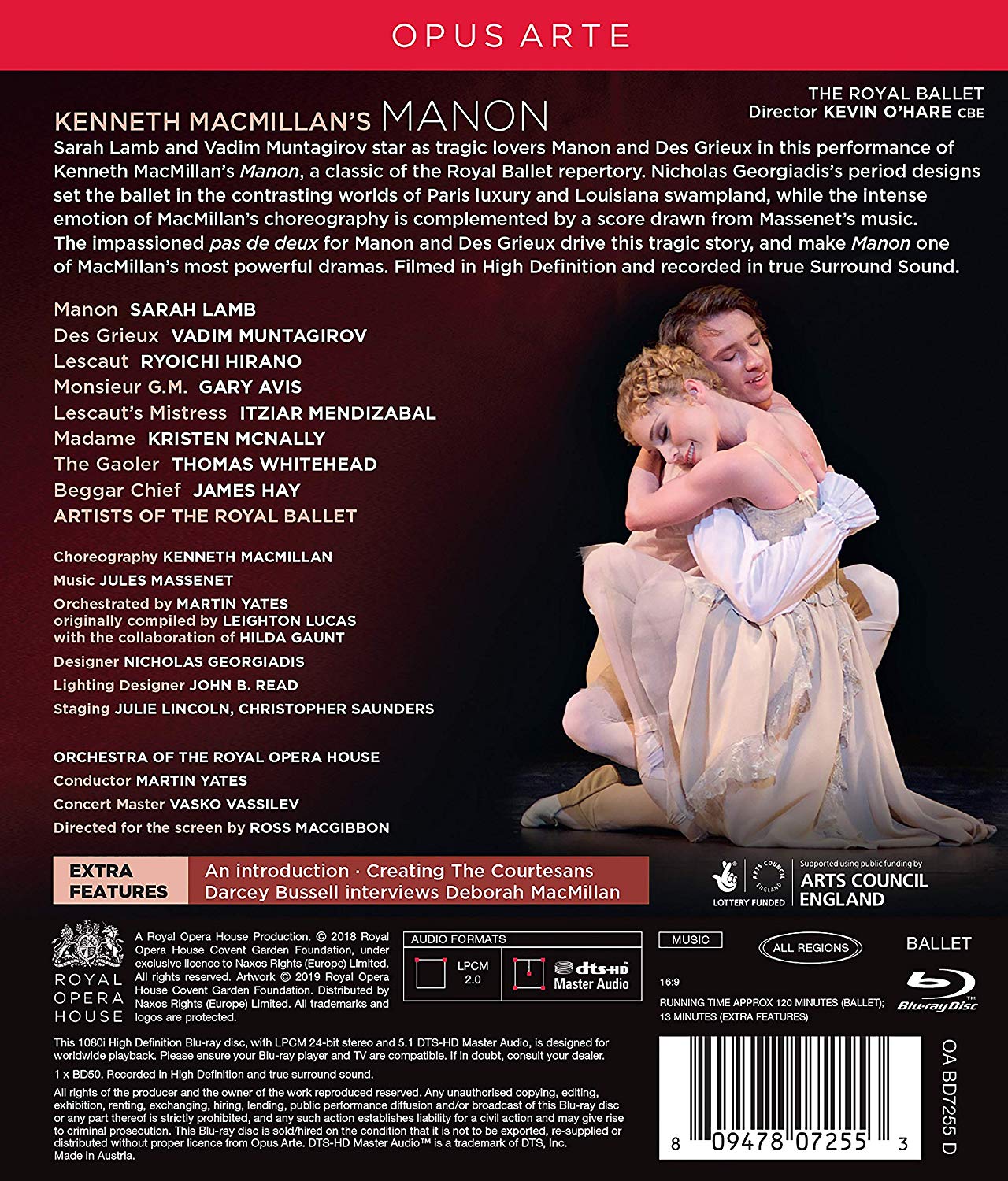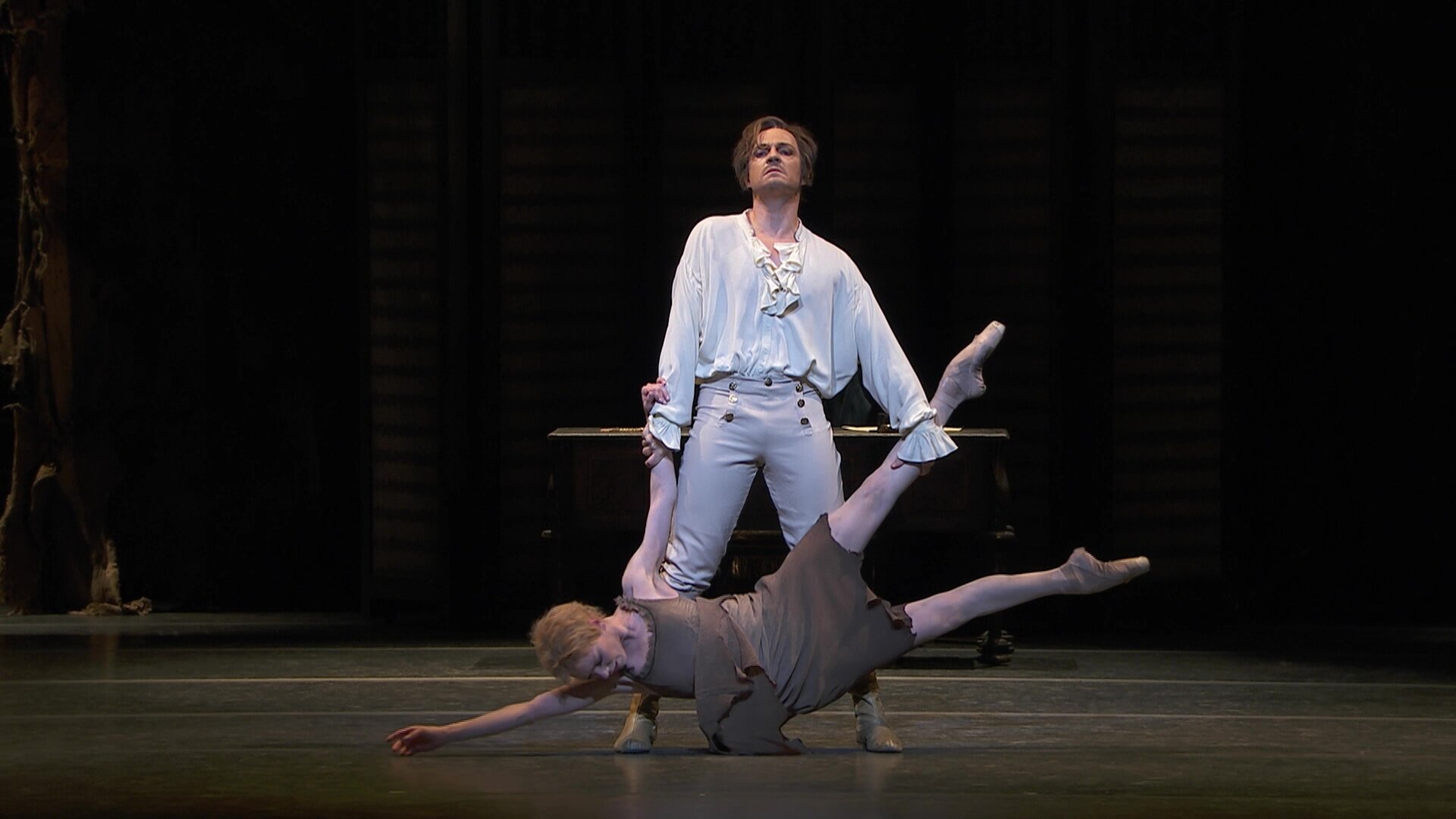

Manon ballet. Music consists of excerpts from the works Jules Massenet arranged and orchestrated by Martin Yates, based on an earlier compilation by Leighton Lucas with the collaboration of Hilda Gaunt. Choreographed by Kenneth MacMillan. Revival staging by Julie Lincoln and Christopher Saunders performed 2018 at the Royal Opera House. Stars Sarah Lamb (Manon), Vadim Muntagirov (Des Grieux), Ryoichi Hirano (Lescaut), Gary Avis (Monsieur G.M.), Itziar Mendizabal (Lescaut’s Mistress), Kristen McNally (Madame), Thomas Whitehead (The Gaoler), James Hay (Beggar Chief), Fumi Kaneko, Beatriz Stix-Brunell, Olivia Cowley, Mayara Magri (Courtesans), Matthew Ball, William Brackwell, Marcelino Sambé (Three Young Gentlemen), Nichol Edmonds, Benjamin Ella, Lukas Bjørneboe Brændsrød, Alastair Marriott, David Yudes (Clients), Jonathan Howells (Old Gentleman), and a multitude of extras played by Artists of the Royal Ballet. Martin Yates conducts the Orchestra of the Royal Opera House (Concert Master Vasko Vassilev). Designs by Nicholas Georgiadis; revival lighting design by John B. Read after William Bundy. Directed for TV by Ross MacGibbon. Released 2019, disc has 5.1 dts-HD Master Audio sound. Grade: A+
The story of Manon (whose last name was Lescaut) is opera and ballet’s saddest story of the pretty young girl getting started on her way as a courtesan. MacMillan’s version goes back to the origin of the story in pre-revolutionary France. At a carriage station at an inn near Paris, we see the whole spectrum of life from a human working as a ratcatcher to a rat working for the King:
Center below is Lescaut (Ryoichi Hirano) a pimp and low-level gangster. He’s waiting for his sister to arrive so he can take her to a convent. In the meantime, he tries to arrange an assignation between his Mistress (Itsiar Mondizabal) with Monsieur G.M. (Gary Avis), the rat in our story. Most versions of the story have G.M. collecting taxes and awarding tax rebates from the King. In any event, G.M. is way too picky to have an interest in anyone working for Lescaut:
The local madam (Kristen McNally) has better wares which are on parade. A quartet of beggars shadows and mocks them:
Watch out for pick-pockets!
Manon arrives. Everybody is interested in the young girl on her way to becoming a nun. Here she attracts the attention of G. M. and also meets an unnamed ratcatcher offering fresh meat for supper. And Madam is also always on the lookout for new talent:
Manon is open to any suggestion how to avoid vows of poverty and chastity. Image how thrilled she is to meet the gallant young gentleman Des Grieux. It’s mutual love at first sight:
But Des Grieux is little more responsible than Manon. They immediately on meeting decide to run away to Paris. Next below are two views from the famous bedroom scene in Paris:
Brother Lescaut and G.M.. undertake to get Manon back. They find her in Paris and offer untold riches if she will leave her starving student and become the mistress of G.M.
Now the scene shifts to the “private hotel” run by Madame:
Sometime has passed and Manon has learned the ropes. Next below we see her in full regalia. She smiles slyly because she has a special show planned to entertain G.M. at Madam’s hotel:
The show is a spectacular dance with any of the guests at the hotel who wish to participate:
G.M. rewards Manon with a priceless bracelet:
But Des Grieux is also at the party and Manon’s old feelings for him start to emerge again. Manon and Lescaut help Des Grieux win money from G.M. at cards. But poor Des Grieux gets caught!
The death of Lescaut:
Manon is shipped to a penal colony in the New World and Des Grieux goes with her. Below the rape of Manon by the Jailor:
The death of Manon:
There’s no hint of humor or morals in MacMillan’s concept: only elegance or degradation. Lamb and Muntagirov are terrific because they both look younger than their real age. The other character dancers are convincing and the corps dancers have totally mastered all the intricate moves which make up a powerful impression of what life was like in France before the French Revolution. The sets and costumes are rich and convincing also if a bit oppressive in various shades of brown, gray, and orange. It’s amazing how well the music of the Massenet pastiche fits the dramatic requirements of the plot. The orchestra played gallantly and was especially well recorded.
We did a Wonk Worksheet of the 7 scenes in 2 Acts. Each scene was connected to the others by an orchestra interlude, a much better way to present this than the “tableau” solution chosen by the Paris Opera Ballet in their Manon. Dividing the actual dancing time by the number of clips of the dancing shows that MacGibbon achieved an average pace of 10.8 seconds per clip. This is not the truly slow pace we seek in ballet titles, but it does avoid a diagnosis of DVDitis. There is a lot of fast narrative action in this story ballet, but MacGibbon slowed down the overall pace with long clips of the solo dancers and love duets. For example, Act 2, scene 2 — the second love duet between Lamb and Muntagirov — works out at 11.6 seconds despite some frantic action at the end with the murder of Lescaut. So this gets an A+.
Here is a clip from Opus Arte:
OR


















